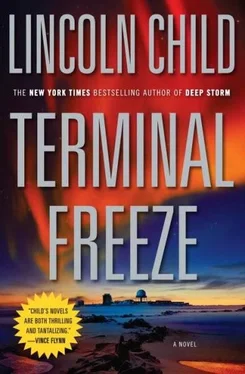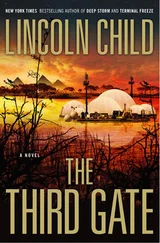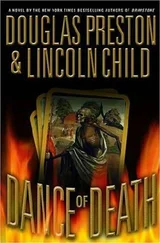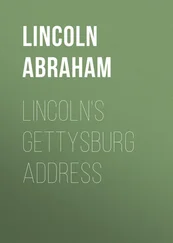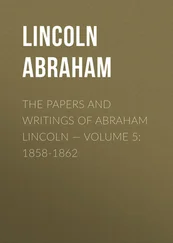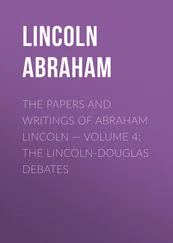“Why indeed?” Marshall replied. Privately, he had been thinking the same thing.
“While cooling my heels in my quarters I went online, did a little digging into Jeremy Logan. Seems he’s a professor of medieval history at Yale. Last year he published a monograph on some genetic disorder that afflicted ancient Egyptian royalty. The year before, a monograph on spectral phenomenon in Salem, Massachusetts. ‘Spectral phenomena.’” Sully spat out the words. “Does that sound like a history professor to you?”
When nobody answered, Sully sighed and looked around. “Well, this speculation won’t get us anywhere. Wright, what was it you wanted to see us about? It is your latest theory du jour?”
Faraday glanced at him. “No theory,” he said. “Just some pictures.”
Sully groaned. “ Again with the photographs? That’s why we’re here? You’re in the wrong profession, you know that?”
Faraday ignored this. “After Evan told us about the theft-after the first hue and cry died down-I went out to the vault. The door was wide open, nobody seemed to care about it anymore. So I took some shots.”
Sully frowned. “Why?”
“Why do I ever take shots? Documentation.” He paused. “Conti seemed to be blaming us already. I thought maybe…well, maybe I’d find some evidence to clear us. I didn’t get a chance to print them until an hour or so ago.” He opened the folder, drew out half a dozen eight-by-tens, and passed them to Sully.
The climatologist shuffled through them quickly, then handed them to Marshall, clearly unimpressed.
The first photo showed a blurry interior of the vault. Chunks and blocks of ice littered the floor, but otherwise it was empty save for the heater in the rear and the large hole between the I beams. Marshall turned to the second photo. This was clearer: a close-up of the hole itself.
“And?” Sully prompted.
“People were saying the thief must have crawled in under the vault.” Faraday removed his glasses, began polishing them on the cuff of his shirt. “Cut out the block of ice with a hacksaw.”
“Yes, we all heard that. So?”
“Did you see that shot of the hole? Look at the kerf pattern.”
“The what?” Sully asked.
“Kerf. The saw marks. If somebody was breaking into the vault from underneath, the marks should go from down to up. But when I examined the edges of the hole in close-up, the marks did the opposite. Went from up to down. ”
“Let me see that.” Sully plucked the photos from Marshall ’s hand, examined them closely. “I don’t see anything.”
“May I?” Marshall retrieved the photos, looked at the close-up again. Although the silver paint of the floor reflected the bright light of the vault, he could immediately see that Faraday was right: the wood splinters weren’t forced upward. Instead, they clearly angled down.
“Whoever it was didn’t break in from underneath,” he said. “They sawed their way out from inside.”
Sully waved his hand in impatient dismissal. “Wolff’s gotten to the two of you. You’re seeing things.”
“No. It’s there all right.” Marshall glanced at Faraday. “You know what this means?”
Faraday nodded. “It means whoever stole the cat knew the combination to the vault.”
Until now, Marshall had been no deeper inside Conti’s capacious suite than its threshold. But as the director gestured for him to enter, Marshall immediately understood why Conti had appropriated not only the commander’s quarters but the deputy commander’s as well. The rambling but spartan set of rooms on C Level had been converted into a sprawling, opulent salon. Leather couches, velvet banquettes, and plush ottomans were placed in complementary attitudes atop expensive Persian rugs. Draperies and postmodernist paintings in discreet frames camouflaged the drab metal walls. The centerpiece of the space was a huge, hundred-inch LCD screen in the rear, its base hidden by rows of chairs set before it: a private cinema for viewing rushes, feature films, and- Marshall felt certain-the Greatest Hits of Emilio Conti.
The director was polite, even cheery, and the only hint he hadn’t slept in perhaps thirty-six hours was the blue-black smudges beneath his eyes. “Good morning, Dr. Marshall,” he said with a smile. “Good morning. Come in, come in. Seven-thirty: excellent. I appreciate promptness.” He’d been watching something on the vast screen-black-and-white, slightly grainy-and with the flick of a remote he switched it off. “Please, sit down.”
He led the way across the room. Through an open doorway, Marshall could see a small conference table, surrounded by ergonomic work chairs. A Moviola stood in a far corner, strips of film trailing from its spools. Marshall stared at it, wondering if this anachronism was part of Conti’s work flow or simply a directorial affectation.
Conti took a seat before the screen and motioned Marshall to do the same. “What do you think of my little screening room?” he asked, still smiling.
“I watched them airlift that thing in,” Marshall said, nodding at the LCD. “I’d assumed it was some critical piece of documentary technology.”
“It is critical,” Conti replied. “Not only for assembling my film but for maintaining my sanity.” He waved at two bookcases full of DVDs that framed the screen. “You see those? That is my reference library. The greatest films ever made: the most beautiful, the most groundbreaking, the most thought provoking. The Battleship Potemkin, Intolerance, Rashômon, Double Indemnity, L’Avventura, The Seventh Seal -they are all here. I never travel anywhere without them. Yet they are not just my solace, Dr. Marshall-they are my oracle, my Delphic temple. Some turn to the Bible for guidance; others, the I Ching. I have these. And they never fail me. Take this, for instance.” And with another flick of the remote Conti restarted the film.
The perpetually worried-looking visage of Victor Mature filled the screen. “ Kiss of Death. Familiar with it?”
Marshall shook his head.
Conti muted the sound to a whisper. “A forgotten masterpiece of 1947. Henry Hathaway’s breakthrough film-but then you must know Hathaway’s work, The House on 92nd Street, 13 Rue Madeleine. Anyway, in the movie, the hero, Nick Bianco”-and Conti pointed at Mature, his exaggerated face now framed by prison bars-“is sent up to Sing Sing on a minor charge. There he’s double-crossed by his shyster lawyer. In order to make parole, he cuts a deal with the DA: he agrees to squeal on this psychopathic killer named Tommy Udo.”
“Sounds intriguing.”
“That’s putting it mildly. Not only is it a brilliant film-but it’s exactly the solution to my problem.”
Marshall frowned. “I don’t follow you.”
“When we discovered the cat was missing, I was close to panic. I was afraid my documentary-possibly even my career-was in jeopardy. You can imagine how I felt. This was to be my ne plus ultra. It was to put me right up there with Eisenstein.”
A prime-time documentary? Marshall thought. He decided it was better to keep mum.
“I paced half the night, worrying, debating what to do. Then I turned to these”-he waved at the bookcases-“and as always they provided the answer I needed.”
Marshall waited, listening, as Conti nodded once more toward the screen. “You see, Kiss of Death is what’s known as a ‘docunoir’: a hybrid of documentary and film noir. Very interesting concept. Very revolutionary.”
He turned to Marshall, the screen illumination throwing the contours of his face into chiaroscuro. “Yesterday, in the heat of the moment, I was sure this was an act of theft. Now I’ve had time to think. And I’ve changed my mind. I’m convinced it was sabotage.”
Читать дальше
